Exotic Fruit Dragon Heart: Useful and Harmful Properties
The outlandish nature of distant countries never ceases to amaze us with its exotic gifts. One of these gifts is pitaya. This fruit, the Heart of the Dragon, has beneficial properties. It appeared in our country quite recently, so Russians are not yet accustomed to it. Let's figure out how it is, what useful properties it has and what you need to know about it.
Content:
- What is Dragon Heart?
- The beneficial properties of pitaya
- How is Dragon Heart eaten?
- The use of pitaya in medicine and cooking
- Who better to refrain from consuming the "dragon heart"?
- How to choose and store fruits correctly?
What is Dragon Heart?
Pitahaya, or pitaya, is the fruit of a tree-like cactus. This fruit is native to the tropical countries of South America. However, today it is widely distributed in the tropical belt of the Earth, therefore it is grown in Vietnam, Thailand, and the Philippines. The fruit is known by many names: "dragon fruit", "dragon heart", "dragon eye" and many others. Names associated with dragons, the fruit received for its characteristic shape. Many beautiful legends are associated with it.
The shape of the fruit is somewhat similar to a spruce cone, it is also covered with large scales - growths.
But this is where the similarities end, because the scales are soft and greenish, and the fruit itself has a color from bright pink to red. The fruit has a rounded shape, therefore it resembles a red heart enveloped in a greenish flame. From this form the name Dragon Heart comes from. Under favorable conditions, the mass of pitaya can reach 1 kg, but more often the fruits grow from 200 to 700 g.
The dense rind is not edible, but it peels off easily, revealing a white, creamy flesh. Depending on the variety, the pulp can also be creamy, pink or bright red. But there are always many small black seeds in it. The fruit tastes sweet and sour, resembles a cross between a banana and a kiwi.
Several varieties of pitaya are known:
- Red. This variety has a bright pink skin and white or creamy flesh. The taste is freshly sweet, and the smell is reminiscent of the smell of herbs.
- Yellow. The shell of this variety is bright yellow in color, resembling a quince or banana in shade. The taste is closer to sweet than to sour, and the aroma is quite strong and pleasant.
- Costa Rican. In this variety, both the skin and the flesh are red. The taste is very bright, even somewhat cloying.
Pitaya is widely used in the national cuisines of Southeast Asia. The pulp of the fruit is eaten fresh, added to salads and baked goods. Thanks to its bright and unusual appearance, the fruit becomes an excellent table decoration. And the folk traditions of a number of countries prescribe the use of the Heart of the Dragon for wedding photo sessions.
The beneficial properties of pitaya
Pitahaya is not only tasty, but also healthy. Its pulp is a real storehouse of vitamins and useful microelements. The fruits contain:
- Vitamins C, B1, B3.
- Trace elements: iron, potassium, phosphorus, calcium.
- Vegetable fiber, which plays an important role in the normalization of digestion processes.
- Ash.
- The seeds are rich in tannins.
An important feature of pitaya is a high concentration of substances in the pulp that can bind free radicals. Therefore, eating pitahaya in food can slow down the aging process, reduce the risk of developing cancer, and strengthen the body's defense systems.
Also, this exotic fruit is able to correct disorders of carbohydrate metabolism, reducing or increasing the amount of sugar in the blood.
In addition, pitahaya has a beneficial effect on the joints, relieving arthritis and arthrosis. Heart of the Dragon will also be appreciated by dieters. The fruit is low in calories, 100 g of pulp contains only 50 kcal. At the same time, the taste will not leave indifferent even the most discerning gourmets.
How is Dragon Heart eaten?
Exotic fruits are amazing, but when it comes to eating, they can be confusing. The question of how to eat the outlandish Dragon Heart is also quite common. It is worth remembering that only pulp is used for food, and the shell, although very decorative, is not suitable for food.
There are two main ways to consume this fruit:
- The fruit is cut in half, and then the pulp is eaten with a teaspoon, removing it from the shell, like ice cream from a vase.
- The peel is removed from the fruit, and the pulp is cut into slices before serving.
National traditions of serving this fruit recommend serving slices of "dragon heart" pulp in its own peeled shell. At the same time, you can also add various nuts and pieces of other fruits to them. Served in this way, pitaya will delight not only the taste, but also the gourmet's eyes and will become a real decoration of the table.
The small seeds that dot the pitaya flesh can also be eaten. They are rich in nutrients and have a beneficial effect on the body when eaten. However, in order for the body to be able to use the beneficial substances hidden in the seeds, they must be thoroughly chewed before swallowing.
The use of pitaya in medicine and cooking
The abundance of nutrients has made the Heart of the Dragon a widely used plant in folk medicine. This fruit is used to treat a variety of diseases:
- Pancreas problems. In diabetes mellitus, Dragon Heart is able to alleviate the patient's condition by normalizing the amount of sugar in the blood.
- Increased acidity of gastric juice and concomitant diseases.
- Immune system problems, decreased ability of the body to fight disease. Strengthening the immune system is provided by the high concentration of ascorbic acid (vitamin C) in this product.
- Diseases of the heart and blood vessels.
- Decreased visual acuity.
- A rich set of vitamins and minerals normalizes metabolism, which contributes to the overall health of the body.
Not only fruits have beneficial properties. From the stems of pitaya, drugs are made for the treatment of helminthiasis. The seeds of the "dragon's heart", rich in tannins and phenolic compounds, are used for the manufacture of drugs for the treatment of diarrhea, the removal of heavy metal poisoning, and the treatment of throat diseases.
The pulp of the fruit is also used for cosmetic purposes.
A pitaya mask relieves sunburn. This knowledge will be especially useful for tourists traveling to Southeast Asia to sunbathe on the beaches. In addition, the fruit pulp puree tones the skin and produces a rejuvenating effect.
And of course, Dragon Heart is just a delicious and beautiful fruit. It is used for the manufacture of fruit salads, alcoholic beverages, sweets.
Who better to refrain from consuming the "dragon heart"?
Any exotic fruit usually causes some concern: is it possible to eat it, are there any contraindications? Pitaya also requires some caution.
If the family has a small child (up to 3 years old) who has previously had diathesis, it is not recommended to give him pitaya pulp.
Since this fruit is not familiar to most Russians, there is a risk of allergies when using it for the first time. Therefore, it is better to start tasting this fruit with a small piece, and then wait for a while. And if some allergy symptoms began to appear (itching, redness of the skin, difficulty breathing, runny nose), then take antihistamines. If everything went well, you can safely enjoy the wonderful taste of the "dragon fruit".
There are practically no other contraindications to the use of this fruit. But it is worth observing in moderation, since overeating can cause indigestion (diarrhea, heartburn, bloating). This rule should be observed for all exotic fruits.
How to choose and store fruits correctly?
Dragon Heart fruits spoil very quickly and are difficult to transport. Therefore, in our country, this fruit is still exotic. It is easier to try pitahaya at home, in Thailand, Vietnam, the Philippines. When choosing a fruit, several rules should be followed:
- The average size of a ripe fruit is about a quarter of a kilogram. Avoid choosing fruits that are too small or too large to avoid colliding with overripe or unripe fruits.
- The color of the peel, regardless of the variety, should be even and rich. If the color is not uniform, it is most likely that the fruit is not yet ripe.
- Feel the fruit before purchasing. Unripe fruits are hard, ripe fruits are noticeably softer.
- Will pay attention to the deciduous scales on the peel. If they are dry, not green, it means that the fruit was plucked long ago and could deteriorate.
- Examine the skin of the fruit carefully before purchasing. If it has cracks, specks, rotten places - the fruit is not fresh and should be discarded.
Ripe Dragon Heart decays very quickly. You need to store the purchased fruits in the refrigerator, and no longer than 4 days. If you buy a fruit in Russia for some celebration, it is better to choose a slightly unripe specimen. It will last longer and gradually reach a ripe state, even if stored in the refrigerator.
Pitaya is a great decoration for any festive table. Correctly chosen and served fruit will create an unforgettable experience. And its unusual appearance will surprise guests and make the holiday more vivid and memorable.
More information can be found in the video:



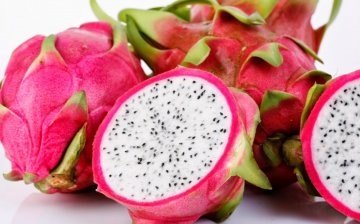
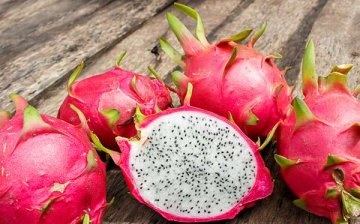
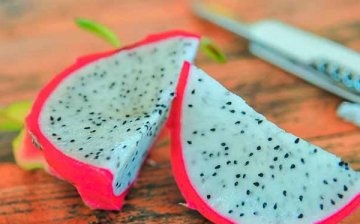


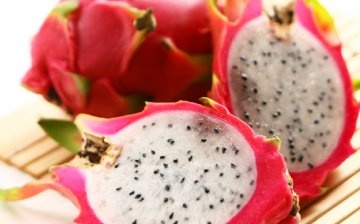
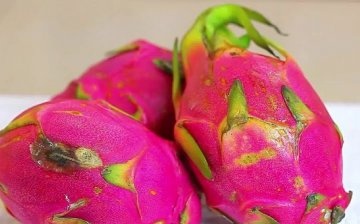







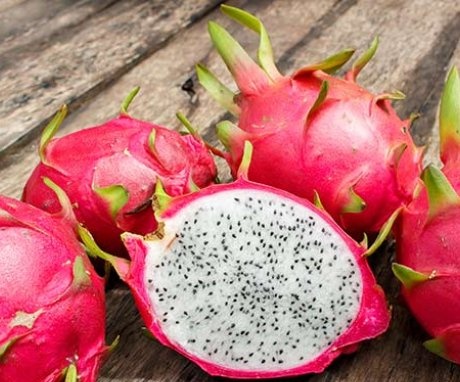
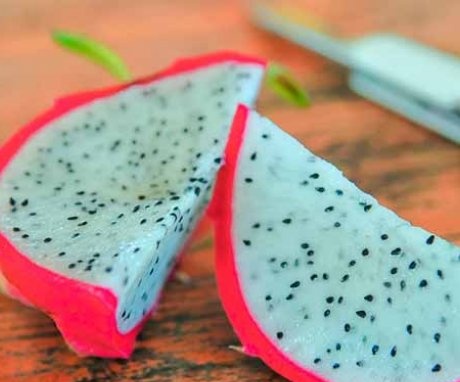
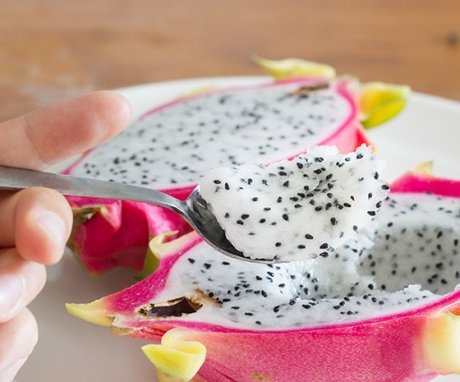
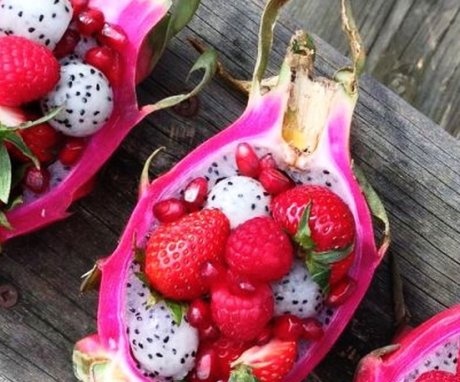
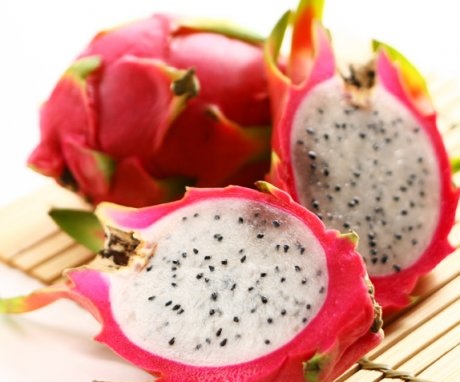
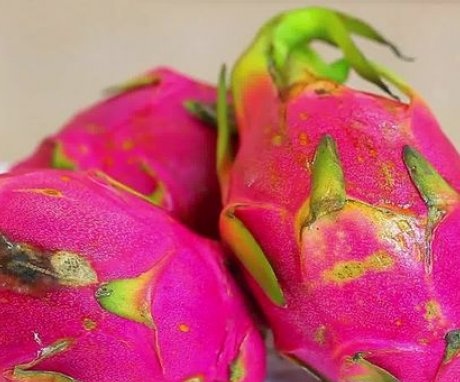
I saw this wonderful exotic fruit in the store, but I never tried it. Now, having an idea of it, I will definitely try, because I love both banana and kiwi. In addition, the fruit turned out to be a storehouse of vitamins.
And I have never even heard of such a fruit. And I didn’t see it in stores, unfortunately. Otherwise I would not have resisted not to try such beauty. Oh, it's a pity that only apples and plums grow normally in my dacha, you definitely can't grow a pitaya ...)
Unfortunately, I have not seen this in our stores, but I read the article - I wanted to try :). I watched a video about him, they say that it tastes like kiwi, but you need to eat it chilled.
It looks very attractive and tasty, we don’t even carry such fruits at all, so I don’t know what it is and what it tastes like, but I already wanted to try looking at these photos.